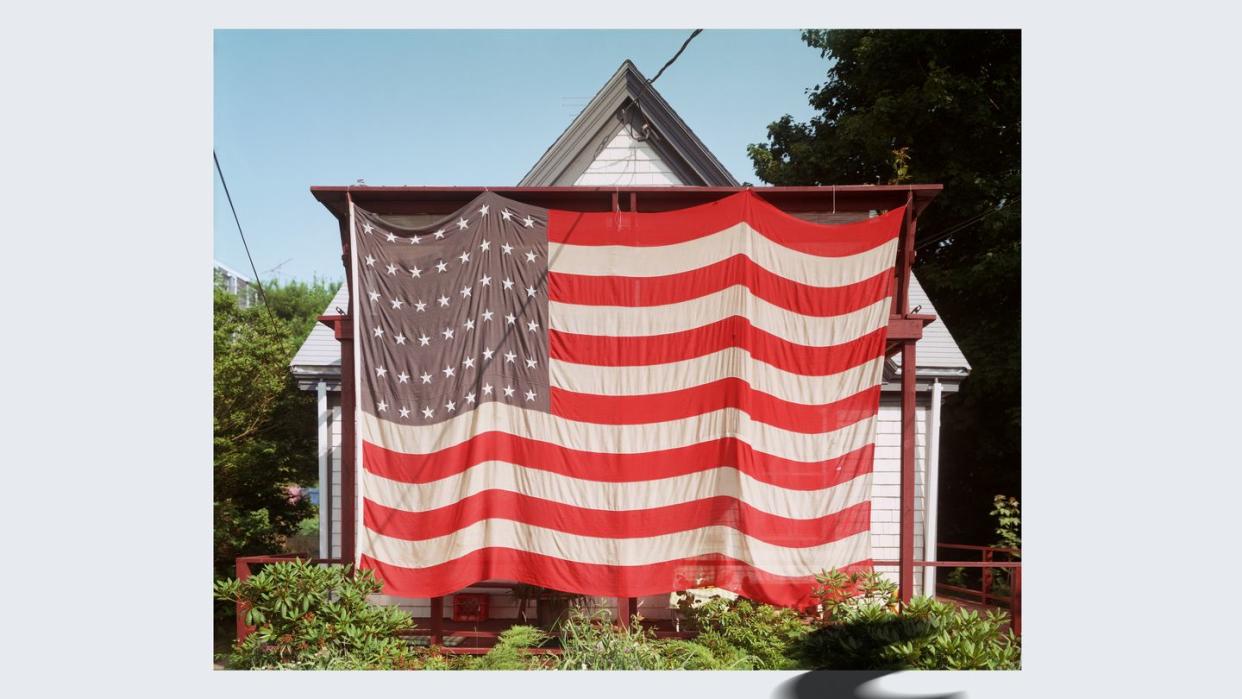Can I Still Be a Patriot?

- Oops!Something went wrong.Please try again later.
I’m thinking about getting an American flag. It should be an easy choice: A flag would be a handsome, charming addition to my home, an 1860s farmhouse in a one-stoplight village. And it makes sense: I’m a presidential historian. My career is an expression of my patriotism. Raising a flag in front of a house financed by my books about presidents would be another.
That’s if I get a flag. I’m worried about the optics, but there’s time. I have until 2026, when the Declaration of Independence will turn 250.
Donald Trump is thinking about the anniversary, too. He’s planning to party all year long—from the Oval Office. I thought our collective memory was the only thing at stake during the semiquincentennial, but it turns out the whole American experiment is up for grabs. What’s a little controversial lawn accessory in comparison?

Well, first, there’s the matter of coolness. A flag wouldn’t cause a stir in my village, but flags didn’t line my childhood streets in Los Angeles, and I can’t recall more than a handful of neighbors with flags in San Francisco or Brooklyn, where I spent much of my adult life.
But this is not the real issue. The real issue is that a house with a flag suggests a racist dwells within.
Just how racist? It’s hard to say. A flag paired with an all lives matter sign is highly suggestive. A flag with Trump 2024 merch even more so. My flag would have no such pairing.
But then there’s the insurrection, a famously BYO flag affair. Recall photos of MAGA types hoisting a consecrated flag with the disgraced president’s face superimposed on it (in violation of the flag code!) as if they were astronauts on the moon. Remember the discarded flag on the floor, all red and white but no blue.
I dread the prospect of being misidentified as one of them—a racist, undemocratic, abortion-banning cult follower, a where-was-she-on-January-6? But that’s the thing about the flag: I love it despite all this.
American history is the best drama this country has ever produced, and the flag, a premature bastard born a year before the Declaration of Independence was signed, has seen it all. It spent its earlier years outside George Washington’s headquarters as he waged a war in the name of liberty while denying it to more than half the country. During the Civil War, 185,000 Black soldiers in United States Colored Troops units carried their own versions of the flag, with their regiment’s name sewn onto it. And during World War II, the first thing my grandfather saw when American soldiers liberated his concentration camp was the flag they carried.
This article appeared in the Winter 2023 issue of Esquire
SUBSCRIBE
In 2026, let’s resolve to commemorate a history defined by those kinds of American stories—and there’s an inspiring precedent for that on July Fourth, an anniversary that has occasioned the kind of self-critical patriotism that fuels change. “We are only continuing the tremendous struggle, which your fathers and my fathers began 86 years ago,” runaway slave turned abolitionist leader Frederick Douglass said on the Fourth of July in 1862. Women’s-rights activist Elizabeth Cady Stanton chose the Declaration’s centennial to proclaim “full equality with man” and demand universal suffrage. And in 1963, Rev. Martin Luther King Jr. called the “magnificent words” of the Constitution and the Declaration of Independence a “promissory note” on which “America has defaulted.”
I support Trump and his merry band of bozos’ right to fly flags, but I want no part of their patriotism. I’ll stick with my own, which is deceptively simple: I can be proud of the founding while reckoning with the ways we’ve fallen short and aspire to a better future.
That’s the key to breaking my flag indecision cycle, too: a pride of flags. The American flag will be on top, of course, but other contenders include Pride, Dissent Is Patriotic, and Black Lives Matter. The ubiquitous yellow one designed by Christopher Gadsden, a merchant turned brigadier general, isn’t in the running, but I do favor its message: Don’t tread on me.
Alexis Coe is a Presidential historian, fellow at New America, and New York Times bestselling author of the forthcoming Young Jack: John F. Kennedy, 1917-1957 (2025), You Never Forget Your First: A Biography of George Washington (2020), and Alice+Freda Forever: A Murder in Memphis (2014).
You Might Also Like

